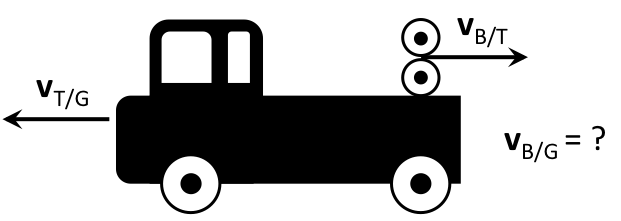This is an old revision of the document!
Relative Motion
All motion requires a frame of reference, an origin from which to make measurements of displacement, and thus velocity, and so on. In many cases, you can take the origin as fixed and make all measurements from that origin. but what happens, if you are on a plane, or a train, or in car? Below is a video made to demonstrate what happens when you compare measurements in fixed and moving reference frames.
We need a way to describe measurements in frames that are moving relative to each other. Consider the example of the truck and the pitching machine in the video above. The truck moves to the left with a speed of 100km/hr while the baseball is fired from the truck to the right with a speed of 100km/hr. In the frame of the camera, which is on the ground, the baseball appears to have no horizontal velocity. 1)
